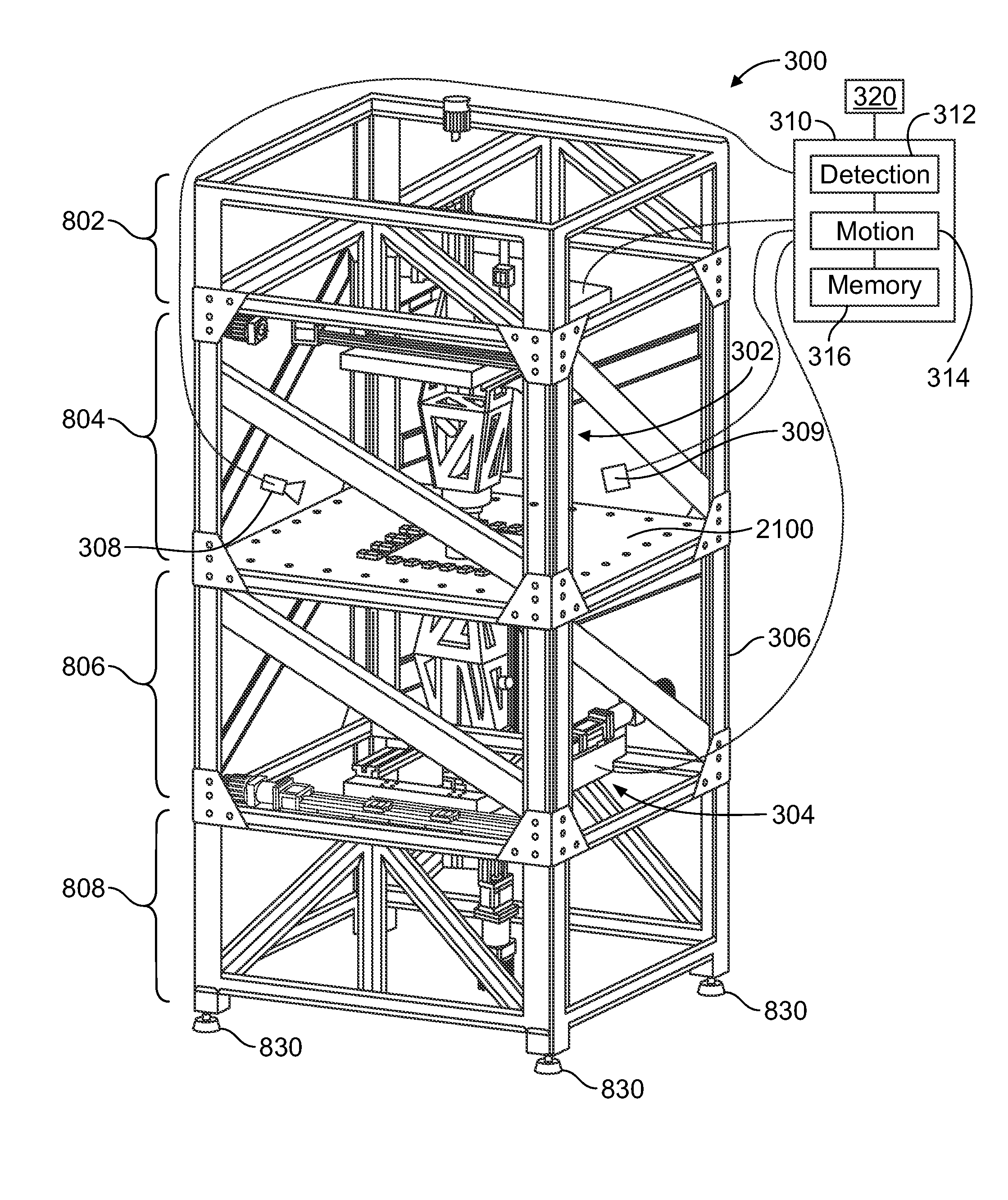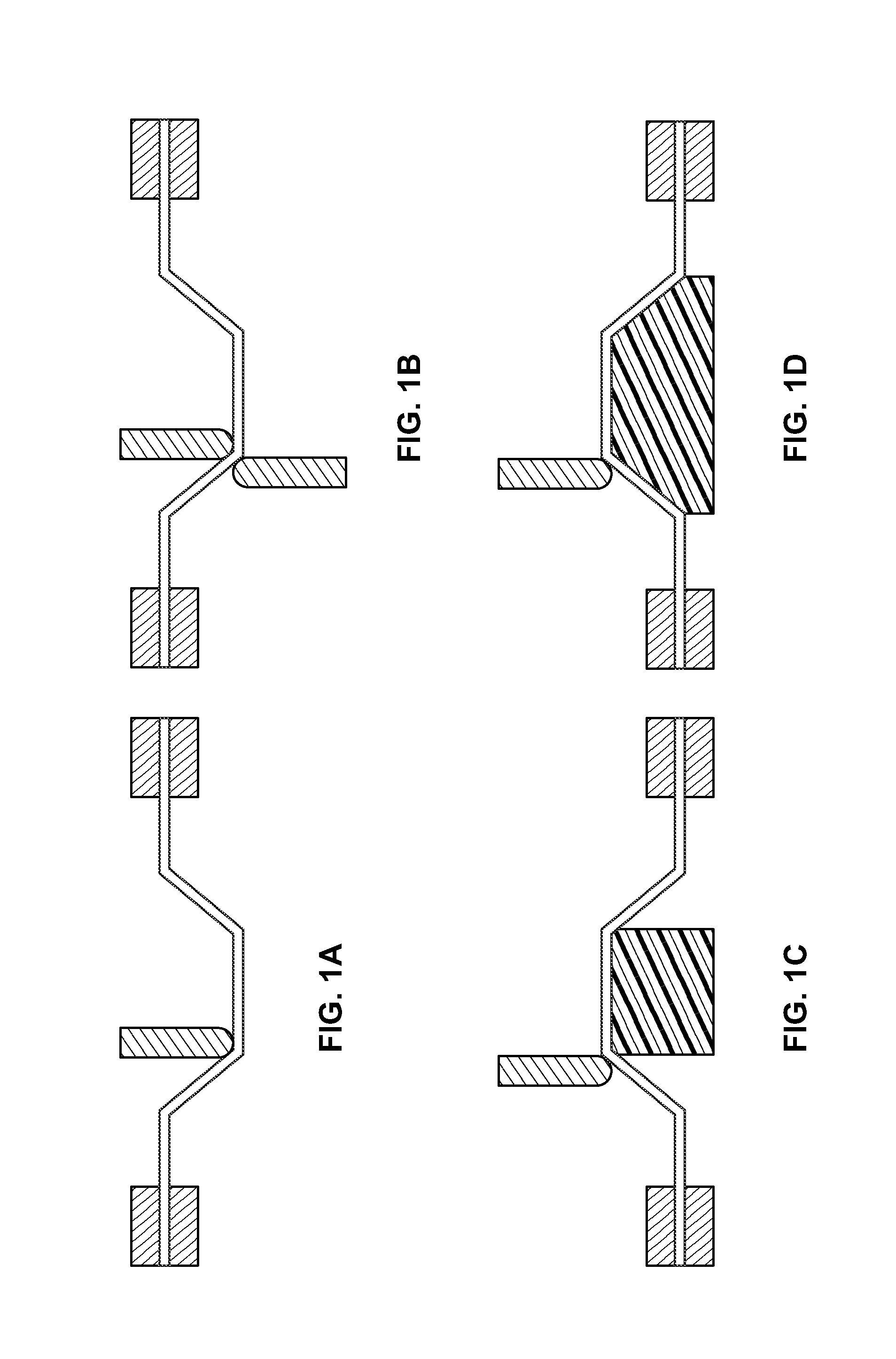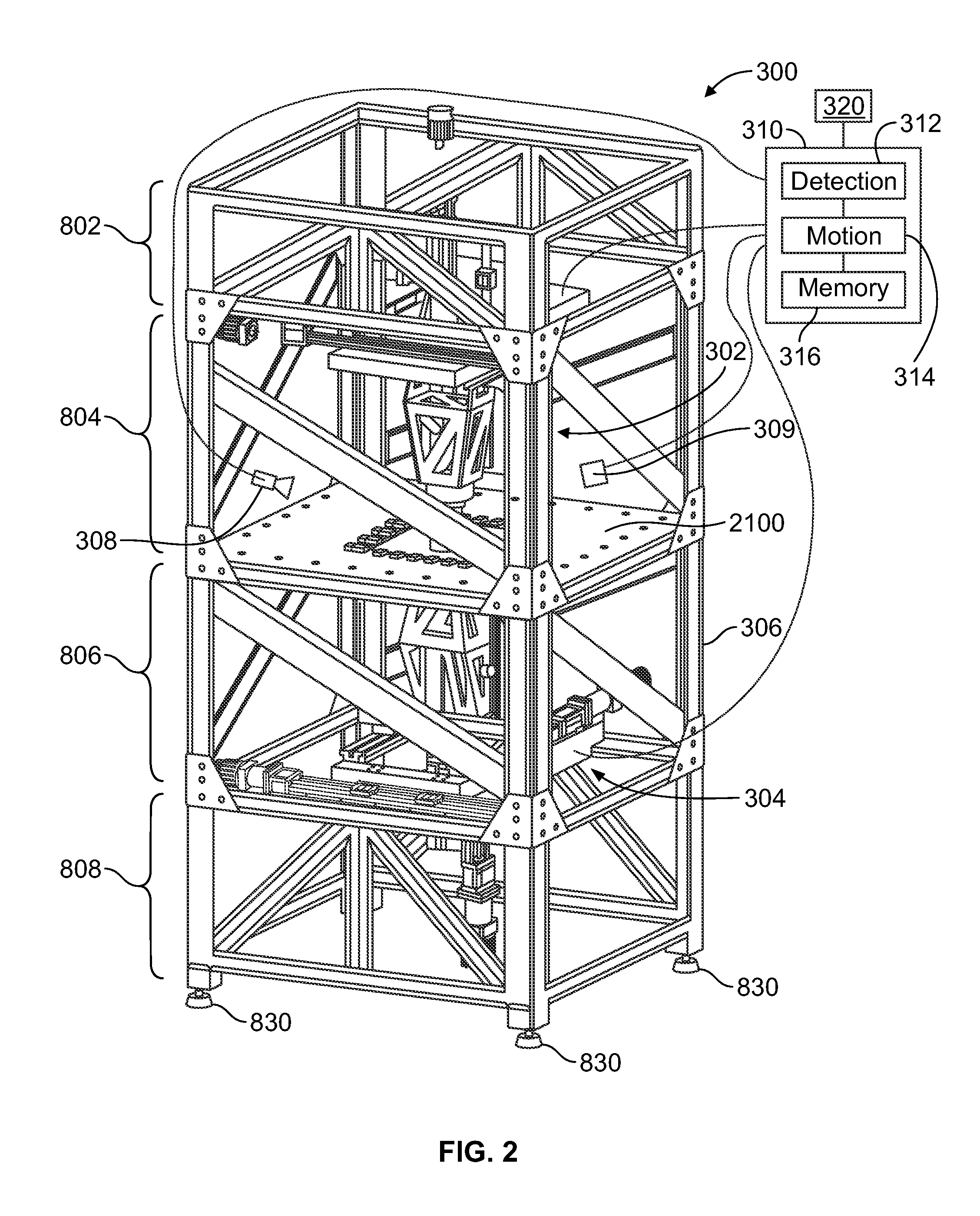System and method for incremental forming
a technology of incremental forming and incremental forming, which is applied in the direction of metal rolling arrangement, manufacturing tools, shaping tools, etc., can solve the problems of inflexible process, low cost of low-volume sheet metal components, and costly sets of dies, which are not well suited to mass production and prototyping needs, and achieve low cost and flexible, high-quality, and high-quality results
- Summary
- Abstract
- Description
- Claims
- Application Information
AI Technical Summary
Benefits of technology
Problems solved by technology
Method used
Image
Examples
Embodiment Construction
[0029]FIG. 2 is a perspective view of one embodiment of an incremental forming system 300. FIG. 3 is an exploded perspective view of one embodiment of a gantry-style axis assembly 400 of the system 300 in accordance with one embodiment. FIG. 4 is a perspective view of the axis assembly 400 shown in FIG. 3. As seen in FIG. 2, the system 300 can include a top axis assembly 302 that includes an axis assembly 400 and a bottom axis assembly 304 that includes another axis assembly 400.
[0030]In the embodiment depicted in FIG. 2, the system 300 includes a top tool positioning assembly 302, a bottom tool positioning assembly 304, a frame 306, a thermal imaging camera 308, a heat treatment module 309, and a control module 310, and a blankholder frame 2100. The top tool positioning assembly 302 and the bottom tool positioning assembly 304 are configured to secure forming tools on opposing sides of a workpiece held in the blankholder frame 2100, for example, during a double-sided incremental fo...
PUM
| Property | Measurement | Unit |
|---|---|---|
| height | aaaaa | aaaaa |
| depth | aaaaa | aaaaa |
| width | aaaaa | aaaaa |
Abstract
Description
Claims
Application Information
 Login to View More
Login to View More - R&D
- Intellectual Property
- Life Sciences
- Materials
- Tech Scout
- Unparalleled Data Quality
- Higher Quality Content
- 60% Fewer Hallucinations
Browse by: Latest US Patents, China's latest patents, Technical Efficacy Thesaurus, Application Domain, Technology Topic, Popular Technical Reports.
© 2025 PatSnap. All rights reserved.Legal|Privacy policy|Modern Slavery Act Transparency Statement|Sitemap|About US| Contact US: help@patsnap.com



